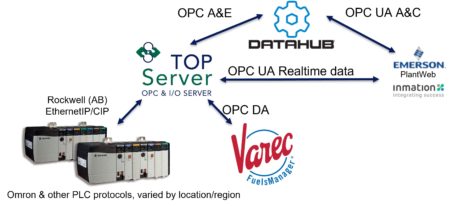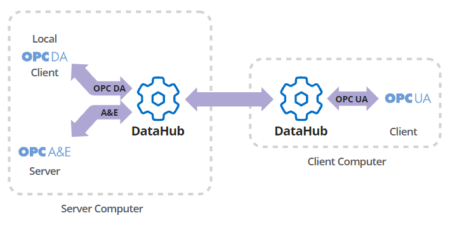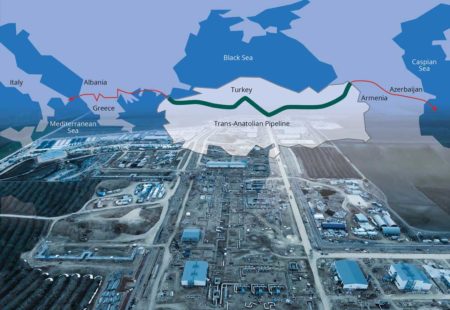SPONSORED BY: SOFTWARE TOOLBOX
Alarm and Event data is critical to industrial operations to notify operators of problems or potential future problems, convey status of process sequences, support the optimization of operations, predict maintenance needs and more. Many times, this data is only found on HMI, SCADA, and notifications systems in the operations side of the business and historically is often isolated to just those systems.
During the pandemic, companies realized where they had blind spots to managing operations with fewer on-site staff and that data of all types needed secure, convenient, and reliable access, including beyond operations and into IT and central offices.
For alarm and event data, the problem historically has been more challenging than just getting real-time data. Alarm & event data is typically a structure of multiple data points all related to a single occurrence of a process value out of normal range, telling you when it went out of range, current value, limit, and more. In the original OPC standards, the OPC Alarm & Events specification or OPC A&E, was designed to provide a standardized interface and data structure for accessing alarm & event data from systems that used to be closed systems or systems only offering proprietary interfaces.
In the OPC UA standards, this functionality has evolved into the OPC UA Alarms & Conditions or OPC UA A&C standard, benefitting from the transport independence, security, and other integrated features of OPC UA. With OPC UA, a process point can offer real-time values, alarm & event data, even historical data from that same node.
To get the most from these OPC standards, tools are needed to provide secure alarm networking using modern technologies, aggregation, centralization, redundancy, conversion from OPC A&E to OPC UA A&C, and logging. Fortunately, there are off-the-shelf software applications that address these needs. The DataHub is an example of a field proven solution that solves these problems. In this article we will look at a couple of application examples and the type of alarm & event data integration challenges that DataHub solves.
Fuel-Terminal Automation with OPC A&E and OPC UA A&C
In this application, the user had multiple fuel terminals with variations in the PLCs used in the control systems at each location. They were seeking to generate new alarms & events from those PLCs but also from Varec Fuels Manager, a key application used at each site. To deal with the varying PLC types they used the TOP Server OPC UA server to create a common tag definition regardless of PLC type. The Varec application was an OPC DA server, which they also pulled into TOP Server using its OPC DA client capabilities, making all the real-time data available via OPC UA. They then defined their alarms in the TOP Server A&E plug-in, which made them available as OPC Alarms & Events.
To implement a local and corporate-wide information roll-up using Emerson PlantWeb/inmation, they needed to have all the data available via OPC UA, both real-time and alarms & events data. They chose the DataHub to handle the OPC Alarms & Events to OPC UA A&C conversion.
DataHub aggregates OPC A&E alarm data from multiple sources and with a few clicks exposes that data as OPC UA Alarms & Conditions data for clients supporting that standard. It can also automatically break out the individual tags within a single alarm or event structure and make them available as single tags via OPC UA real-time data interfaces. That data can also be aggregated with OPC DA or UA real-time data from other systems, as well as many other DataHub interfaces. This is helpful for integrating alarm & event data with HMI, SCADA, and other systems that do not support OPC UA Alarms & Conditions or, as in the case of this story, integrating existing systems using OPC classic standards with systems using OPC UA.
By integrating using OPC UA real-time and A&C to roll up data locally and corporate wide, the customer has experienced improved visibility of key operating metrics which are allowing them to identify new opportunities for optimization.
Alarm & Event Networking Advanced Applications
All industrial data must be kept secure. Alarm & event data is even more critical. When aggregating and transporting that data over a network, it must be encrypted, and the sender & receiver should be authenticated. The OPC UA standard common infrastructure provides this capability automatically, but what about existing OPC A&E applications that have not yet migrated to OPC UA A&C? They need to be able to move that alarm data without losing the fidelity of the alarm information structures while meeting security requirements. With DataHub V10, one option would be to use the conversion of OPC A&E to UA A&C functionality and tunnel OPC UA A&C across the network.
There are some applications though that have intermittent network connections and need store-and-forward capability. These same applications typically involve reduced bandwidth data transmission over cellular, radio, or satellite networks and are found in applications such as pipelines, water & wastewater, wind energy & oil/gas. Some of these same applications require redundant systems and networks, which the DataHub also supports. There are also use cases where the user, for their own security reasons, wants to not move OPC calls across network boundaries. Our next application story involves exactly this type of situation where OPC needed to be augmented by store-and-forward capabilities, giving the customer the best of OPC with the added resilience they needed.
Datahub provides a solution for applications needing network isolation, reduced bandwidth, and redundancy with its included secure data tunneling functionality that keeps the OPC A&E structures intact, moving them in an encrypted, authenticated network connection between instances of the DataHub. Only data changes are moved, which provides lightweight bandwidth utilization. In the previous diagram, this tunneling capability is used between the server and client machines. Store-and-forward capabilities ensure that data gets through when connections drop and resume.
Another scenario we are seeing more frequently involves corporate cybersecurity policies requiring the use of proxies and DMZs and even requiring that there be no inbound firewall ports on the IT or OT side of the connection. DataHub’s tunneling functionality is designed to work in this advanced secure networking configuration moving OPC UA real-time, A&C, OPC DA & OPC A&E data securely and reliably.
Secure Tunneling of Alarm & Events Data in Pipeline Automation
DataHub middleware was used by ABB to support highly redundant, secure networking of OPC A&E and real-time data on the Trans-Anatolian Natural Gas Pipeline (TANAP) project in Turkey. Reliable data communication is critical to the secure operation of the pipeline. This application story provided by our partner Skkynet shows how the advanced OPC integration features of DataHub are put to work on a large scale. Although at the time this system was implemented integration with OPC UA A&C was not an option, the same concepts apply to the use of OPC UA real-time and A&C data. Also, this customer now has the option to add OPC UA integration into their data aggregation and networking infrastructure within the same application instead of having to add other software.
Every aspect of operation from equipment functioning to leak detection is monitored, controlled, stored, and transmitted between the remote stations and the control center. Hundreds of thousands of OPC DA and OPC A&E data values are tunneled by the DataHub across redundant, state-of-the-art fiber optic networks with VSAT satellite backup, and are seamlessly integrated with SCADA systems for monitoring and supervisory control.
Because it isolates the OPC connection from the networked tunnel connection, the DataHub can just as easily transmit OPC A&E alarm data across the tunnel as OPC DA real-time data. And since it supports OPC server-to-server bridging, it can connect OPC servers at the control center with OPC servers in the field. Perhaps most important, the DataHub’s built-in redundancy support has allowed the ABB team to configure a highly reliable system with multiple layers of redundancy. Learn more about this application here.
DataHub OPC & Alarm Functionality Overview
To summarize, the DataHub is a secure real-time middleware application that empowers the integration of data across multiple OPC UA and classic standards as well as robust alarm generation capabilities starting with DataHub V10. Free trial software and technical consultations are available so you can see how DataHub can help in getting the most from your OPC alarm & events/conditions data.
- OPC UA Configuration Accelerators for certificate management, global discovery, connection troubleshooting
- OPC UA Real-Time data Client & Server
- OPC UA Alarms & Conditions Client & Server
- OPC UA Historical Data Server when used with its historian integration capabilities
- OPC DA Client & Server
- OPC A&E Client & Server
- OPC protocol convertor – DA to UA, A&E to UA A&C
- Redundancy
- Alarm Generation – connect to OPC UA, DA real-time data sources, and generate and deliver alarms via OPC UA A&C or OPC Classic A&E
- Alarm Logging, Aggregation, Centralization
Get Your DataHub Free Trial Today



